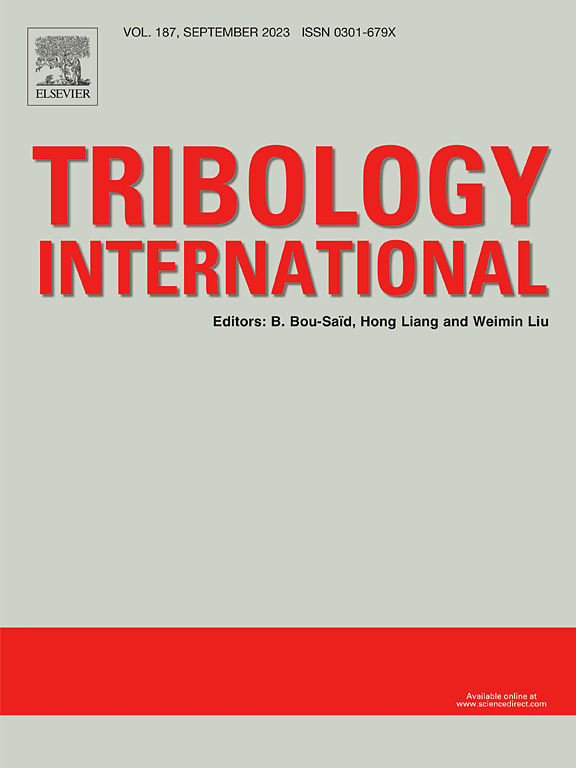Molecular dynamics study on the interlayer friction behavior of two-dimensional binary materials under non-fixed mismatched angles: A comprehensive analysis of boron nitride nanosheets
IF 6.1
1区 工程技术
Q1 ENGINEERING, MECHANICAL
引用次数: 0
Abstract
Two-dimensional binary materials, due to their unique optoelectronic properties and excellent mechanical stability, are ideal candidates for addressing tribological issues in micro-nano electromechanical systems. This study employs molecular dynamics simulations to investigate the interlayer behavior of boron nitride under rotational friction. We systematically analyzed the effects of normal load, uniaxial strain, sliding velocity, temperature, and substrate stiffness on friction performance. Results indicate that rotational sliding reduces the friction force differences under various directional strains. Complex coupling relationships exist among these factors, such as increased load enhancing thermally activated lubrication mechanisms. The study also captured an atomic trajectory selection mechanism that controls atomic motion via speed, its reversibility and controllability offering a new way to dynamically regulate interlayer friction.
求助全文
约1分钟内获得全文
求助全文
来源期刊

Tribology International
工程技术-工程:机械
CiteScore
10.10
自引率
16.10%
发文量
627
审稿时长
35 days
期刊介绍:
Tribology is the science of rubbing surfaces and contributes to every facet of our everyday life, from live cell friction to engine lubrication and seismology. As such tribology is truly multidisciplinary and this extraordinary breadth of scientific interest is reflected in the scope of Tribology International.
Tribology International seeks to publish original research papers of the highest scientific quality to provide an archival resource for scientists from all backgrounds. Written contributions are invited reporting experimental and modelling studies both in established areas of tribology and emerging fields. Scientific topics include the physics or chemistry of tribo-surfaces, bio-tribology, surface engineering and materials, contact mechanics, nano-tribology, lubricants and hydrodynamic lubrication.
 求助内容:
求助内容: 应助结果提醒方式:
应助结果提醒方式:


